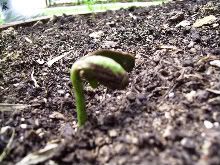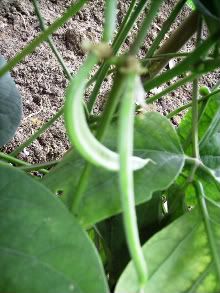That was a great debate on mooncakes - errr but there is severe digression. It is important to know when to control our thoughts and get back to the focus.
Great input:
1) Insulators
2) Warm or cold moncakes
3) Material
All else is detracting from the main focus which is Science here.
No one has adressed the similarity stated by many of you: Both are insulators. Then how does one insulator differentiate form the other? Is the purpose of the insulator in both cases different?
Many discussed material used - does that have an importance besides aesthetics - please move away from that point because you are missing important Science facts here!
But most importantly, did anyone ask around or think about the main types of mooncakes available in Singapore? Please note the word "MAIN". Do they affect the types of boxes used? The long discussion of eating cold or warm mooncakes should have been such a good clue.
Finally, to say that styrofoam is probably not from an expensive restaurant is a subjective comment because it is impossible to tell just by looking at a picture. I will divulge more later.
I enjoy the chatter as only through free Talk can we clarify our own thoughts. We must be willing to change our thoughts after "listening" to others when they make sense. It is not a case of "Hear me. I'm right!' Comments that make sense have been researched and are well suported by facts and examples.
Let's focus on making our chatter productive and fun at the same time.
How To Soar in PSLE - BTPS Way!!
Interact with complex questions / graphs / pictures to pick up valuable clues (don't highlight - just use your pen to underline words or scribble notes)
Start with Booklet A and do it meticulously with full focus - explore all 4 distractors before making final choice.
MANAGE your TIME - to score well, you need to try to finish ALL questions.
Specific answers = answers that are relevant to question.
When confused, choose any of the following strategies:
1. Ask, "What Science idea is being used in question?"
2. Pose other questions to clarify your thoughts
3. COMPARE to another set-up
4. COMPARE to a reverse situation
5. Connect to your knowledge in life (yes, you do have lots of prior / other knowledge)
6. Break down your answer in steps before crafting final answer.
Common problems with wrong answers:
*Answers are generic/vague and do not connect to that specific question
*Answers are not scientific and do not explain using Science ideas
*Answers do not make use of data provided when asked
*Answers did not make comparisons - use words like more/most etc..when asked
BTPS supports all P6 in achieving their PSLE GOALS!!
Start with Booklet A and do it meticulously with full focus - explore all 4 distractors before making final choice.
MANAGE your TIME - to score well, you need to try to finish ALL questions.
Specific answers = answers that are relevant to question.
When confused, choose any of the following strategies:
1. Ask, "What Science idea is being used in question?"
2. Pose other questions to clarify your thoughts
3. COMPARE to another set-up
4. COMPARE to a reverse situation
5. Connect to your knowledge in life (yes, you do have lots of prior / other knowledge)
6. Break down your answer in steps before crafting final answer.
Common problems with wrong answers:
*Answers are generic/vague and do not connect to that specific question
*Answers are not scientific and do not explain using Science ideas
*Answers do not make use of data provided when asked
*Answers did not make comparisons - use words like more/most etc..when asked
BTPS supports all P6 in achieving their PSLE GOALS!!
Subscribe to:
Post Comments (Atom)
Science Around Me (SAM)
SAM is a Science journal that allows pupils to express themselves in their favourite ways about Science.
SAM is another great opportunity for pupils to THINK and TALK Science in a medium that is customised to their learning styles.
SAM allows teachers to informally assess understanding of the child and clarify misconceptions in their learning.
SAM is another great opportunity for pupils to THINK and TALK Science in a medium that is customised to their learning styles.
SAM allows teachers to informally assess understanding of the child and clarify misconceptions in their learning.
Factors Affecting the Environment by Gog Ru Yan - 6G

When Ice Changes into Water by Goh Chee Yan - 5G
Do you wonder whether the mass of ice changes when it melts into water. Try this out:
1. Put a few ice cubes into a plastic bag
2. Tie the mouth of the bag tightly
3. Weigh the bag of ice cubes (if there is condensation outside the bag, wipe it dry before weighing)
4. Place the bag in the sun
5. When ice has melted, wipe the outside of the bag dry (refer to step 3)
6. Weigh the bag
You will discover that the mass of the bag remains the same!
There is no change in mass when ice melts!!
1. Put a few ice cubes into a plastic bag
2. Tie the mouth of the bag tightly
3. Weigh the bag of ice cubes (if there is condensation outside the bag, wipe it dry before weighing)
4. Place the bag in the sun
5. When ice has melted, wipe the outside of the bag dry (refer to step 3)
6. Weigh the bag
You will discover that the mass of the bag remains the same!
There is no change in mass when ice melts!!
Simple Steps to fight Dengue by Elizabeth Wu 4C







4 comments:
Youn Yea Won Ellia (6C)
I hope to answer more likely in the way Mrs Chien wants us to. And more likely on the focus we are talking.
Ok, we'll try to use science facts.
I will try to answer those for your questions. Thanks for telling us what to do.
MARCUS CHIOH 6G
Marcus, we better use science facts. The 'Main' actually means (Marcus look at the post you posted in the mooncake on the moon 1 ), the majority, so therefore you said that 90% of singaporeans actually prefer it cold.
Pek Yu-Xuan Sean
For people to purchase a particular item,the outer appearance must be eye-catching.I mean,no one would buy mooncakes sold in a plain old smelly box right?So that is why mooncake manufacturers will try to make the outer appearance as attractive as they can.
Some mooncake containers are made from styrofoam. That is because there is a huge variety of mooncakes and their needs differ. Mooncakes that need to be kept in styrofoam boxes are mainly made from ice-cream or an easily melting object. Styrofoam is a poor conductor of heat so it is able to maintain the cold temperature of the mooncakes. While the other types of common mooncake containers are made from cardboard.It is hard,so it ensures that the mooncakes inside easily not easily squashed.
Post a Comment